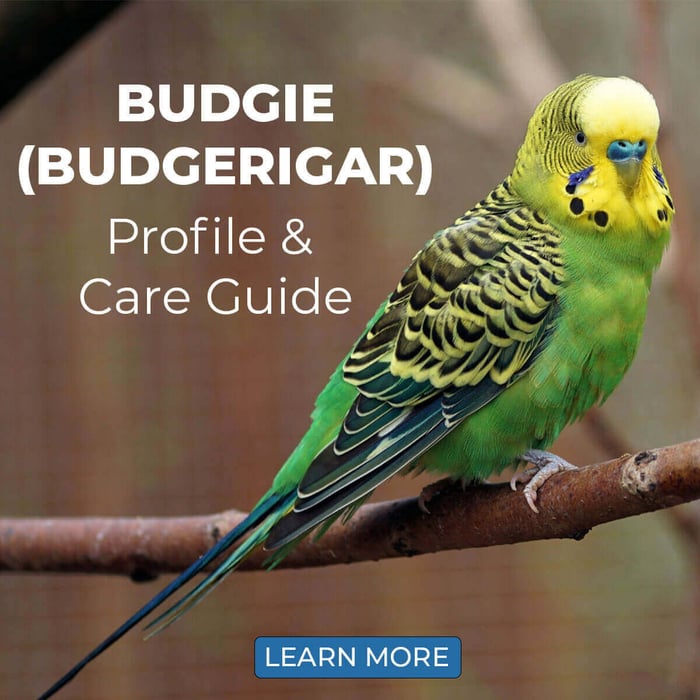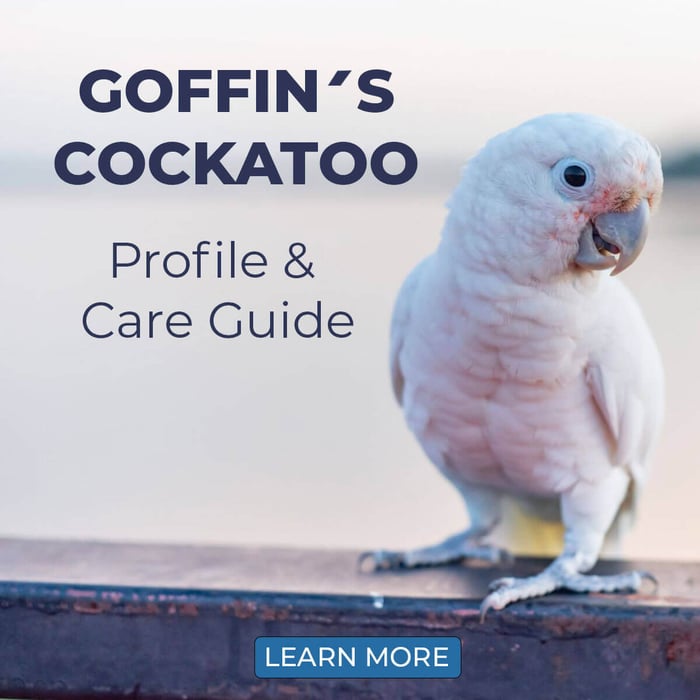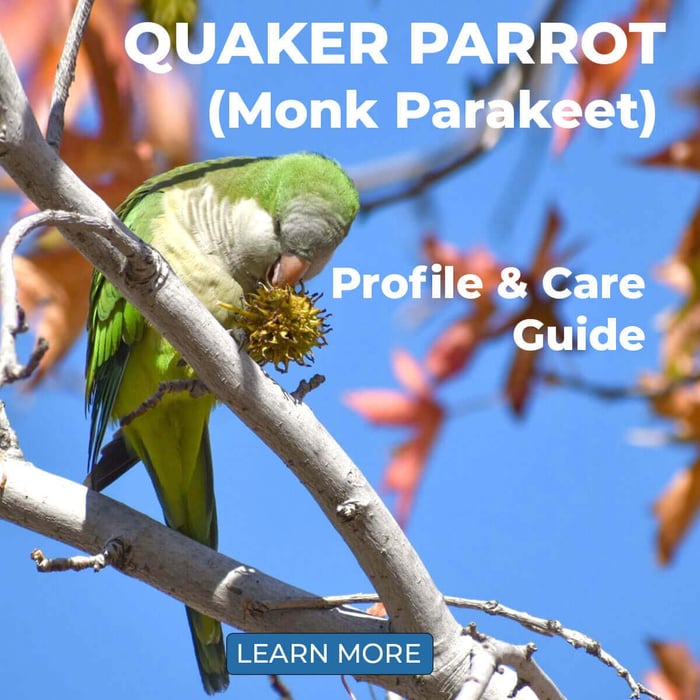Jardine's Parrot – Profile & Care Guide
| Common name: | Jardine's parrot, red-fronted parrot |
| Latin name: | Poicephalus gulielmi |
| Length: | 28 - 30cm/11.8 inches |
| Weight: | 200 - 250 grams |
| Life Span: | 20 - 30 years |
| Origin: | Cameroon, Angola, Kenya, Liberia and Tanzania |
| Noise Level: | Low (for a parrot) |
NATURAL HABITAT
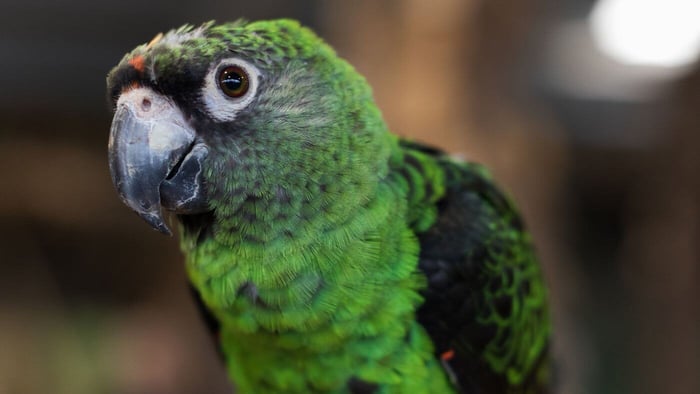
The Jardine's parrot is a species of parrot that can be found across a number of African countries, including Angola, Cameroon, and the Central African Republic. These birds can typically be found in small flocks inhabiting lowland forests and sometimes coffee plantations. Despite their wide distribution range, populations of Jardine's parrots have been decreasing in recent years, which has led to an international ban on trading, importing and exporting the species. Unfortunately, trapping for the pet trade continues to be a problem.
Like many parrot species, Jardine's parrots nest in tree cavities located high in the tree tops. Their breeding season typically runs from September to February or March, with an incubation period of approximately 28 days for the eggs. During this time, both parents will care for the young.
While Jardine's parrots are not currently considered to be under direct threat due to their large distribution range, their decreasing populations serve as a reminder that even species that are not classified as endangered can still be vulnerable to human activities such as trapping for the pet trade. Conservation efforts, including the international ban on trading and import/export, are crucial in protecting these parrots and other vulnerable species from further population declines.
More information about their current status can be found on the IUCN Red List.
SUBSPECIES
There are three subspecies of the Jardine's parrot:
- P.g. guilielmi – Endemic to the Congo river basin
- P.g. massaicus – Endemic to Kenya and northern Tanzania
- P.g. fantiensis – Endemic to Liberia and southern Ghana
INTELLIGENCE & PERSONALITY
Jardine's parrots are highly intelligent and thus require plenty of interaction with their adopted human family. They're known for being acrobatic birds and enjoy learning new tricks.
This parrot is very affectionate, with captive birds becoming very tame. Unlike some other parrot species, they don't tend to be 'one-person birds'; instead, they bond equally with multiple people. This makes it a great family bird. Because they are very active, a Jardine's will need a large cage and regular physical exercise to prevent it from getting bored.
More mental stimulation is always better. Adding plenty of suitable toys to your parrot's cage is crucial, as is rotating them on a regular basis: these birds love having access to plenty of new and exciting items to explore and play with. As they are quite destructive, it's important to go for robust toys. Provide plenty of shreddable paper, softwood and other fun stuff for your bird to chew on.
Although not aggressive, males can become protective of what they consider their territory and mate during the breeding season.
TALKING ABILITY
Jardine's parrot talking abilities are considered moderate. They can develop a fairly large vocabulary, but they aren't able to pronounce words all that clearly.
In terms of day-to-day noise, their sounds mostly consist of low-pitched whistles and sounds, usually not overly loud. Still, it's important to remember that no parrot can be considered quiet!
DIET
In the wild, these birds spend most of their time foraging and searching for food high up in the tree tops. Here, they eat a variety of fruits and seeds of various plant species.
In captivity, obesity is a common problem, so it's important to feed a suitable diet and weigh your parrot on a regular basis to ensure it's still at a healthy weight.
Variety is the key to providing a healthy diet for any parrot species. A high-quality pellet food can be used as a staple, making up around 70% – 80% of its daily meals.
Jardine's Diet Suggestions
Aside from pellets, you can offer a mix of the following foods:
Fruits and vegetables – In the wild, a big part of their diet consists of fruits, which are rich in nutrients and vitamins. Fruits are also high in sugar, however, so you should be careful not to overfeed them, as captive birds are less active than their wild counterparts. Vegetables can be fed on a daily basis.
Seed blend – A variety of high-quality seeds can be fed on a regular basis, especially in their sprouted form. You can also give other types of grains or even some dry or cooked pasta for added variety.
Treats – Parrots like Jardines love sunflower seeds, nuts, dried fruits and other bird treats. These are quite fatty and sugary, so limit yourself to offering small pieces. They're especially handy during training time, as food is the best motivator when teaching your bird new stuff!
Your bird should have access to clean water at all times, preferably from multiple sources. Clean out both water and food dishes daily.
Offering plenty of calcium in the form of a cuttlefish bone or calcium block is also a good idea. This is particularly important during breeding time, as females need extra calcium to produce egg shells.
HOUSING
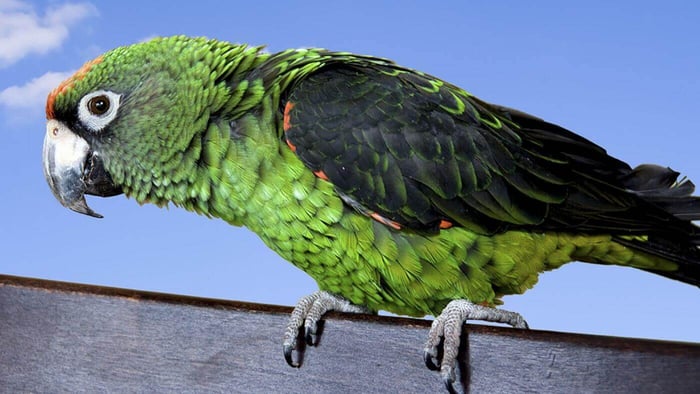
In terms of housing, keep in mind that the bigger the cage, the better. A cage large enough for the bird to spread its wings should be provided, and you should allow your bird at least a few hours of out-of-cage time on a daily basis.
As a suggestion, the cage should be at least 75 x 75 x 90 cm. The bar spacing should be 2 cm to 2.5 cm, preferably with horizontal bars to allow your bird to climb. Perches should be made of natural wood as the parrots love chewing on them, and it's better for their feet in the long run than plastic or dowel perches.
Letting your bird out of its cage daily is a necessity, as plenty of exercise is important to prevent health issues and a shortened lifespan in the long run. The opportunity to explore also helps with preventing boredom and results in a happier parrot.
Again, variation is the key to a good home for this bird. Switching up toys, creating or buying new toys and challenging your parrot with new tricks are some great ways to make its life more fun.
FEATHER PLUCKING & COMMON ISSUES
Jardines are not prone to feather plucking; however, as mentioned earlier, they do require a fair amount of stimulation to prevent boredom.
Respiratory problems can be an issue with these birds. During winter, the birds can catch a cold or become sick as a result of the cold and fluctuating temperatures. A balanced diet and the right living circumstances will minimize the chances of your bird falling sick.
FACTS & FAQ
The bird is named after Sir William Jardine, who brought one bird to the UK for his son. He named this bird Congo Jack. The scientific name gulielmi also means 'William's'.
Jardine's parrots are also known as the red-fronted parrot and are named after Sir William Jardine, a 19th-century Scottish naturalist who brought one bird to the UK for his son.
They have a striking appearance, with a red forehead, green feathers on their back and wings, and a blue tail.
Jardine's parrots are known for their intelligence and ability to mimic human speech and other sounds.
These birds are very social and love to be around their human companions.
Jardine's parrots are omnivorous and feed on a variety of foods, including seeds, fruits, nuts, and insects.
CONCLUSION
To summarise, Jardines are among the most playful and energetic, with an inclination for "playing dead" and lying on their backs. They generally have a steady, mild temperament.
Like all pet parrots, this species can turn to feather plucking when bored. They don't have any known behavioural problems but can become nippy if only used to being handled by one person.
Adopting a bird is the best way to acquire this parrot. Contact your local bird shelter to discuss the possibilities. If you buy a parrot, ask for the certifications that prove it is captive-bred.
To view other Parrot Profiles & Care Guides, visit our Alphabetical list of Parrot Fact Sheets by visiting:https://parrotessentials.co.uk/blog/parrot-profiles-care-guides

